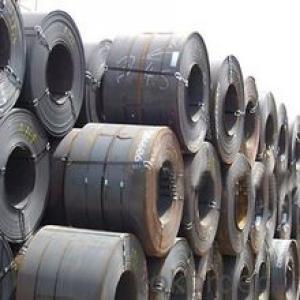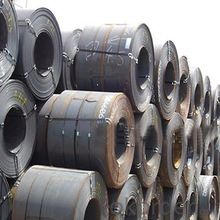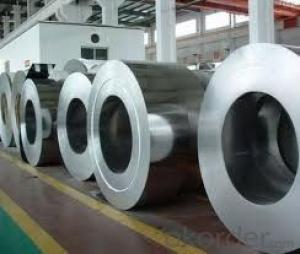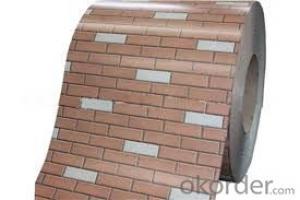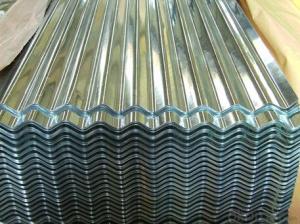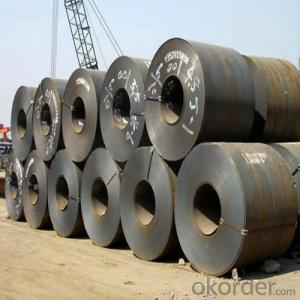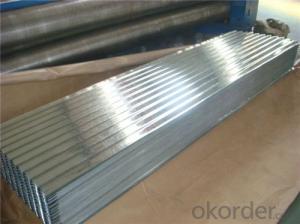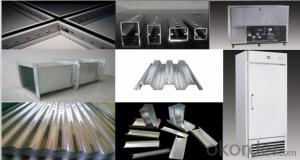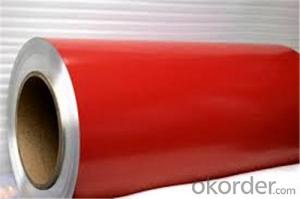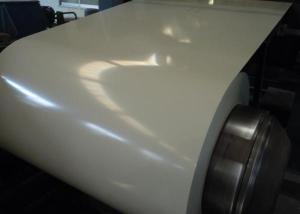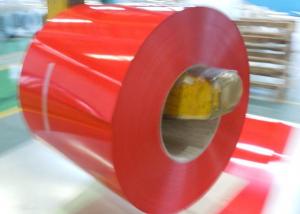Hot rolled steel coils
- Loading Port:
- China Main Port
- Payment Terms:
- TT OR LC
- Min Order Qty:
- -
- Supply Capability:
- 50000 m.t./month
OKorder Service Pledge
OKorder Financial Service
You Might Also Like
Quick Details
Standard:AISI, ASTM, BS, DIN, GB, JIS
Grade:Q195-Q235 SS400
Thickness:1.5-600mm
Place of Origin:China (Mainland)
Model Number:1.2-12.5
Type:Steel Coil
Technique:Hot Rolled
Surface Treatment:Other
Application:Boiler Plate
Special Use:High-strength Steel Plate
Width:1020
Length:L
Packaging & Delivery
| Packaging Details: | export package |
|---|---|
| Delivery Detail: | 30days |
Specifications
Hot rolled coils/plates
Type: steel coil and steel plates
Material: SS400-Q235-Q345-SPHC
Width:1250mm 1500mm 1800mm 2000mm
Specifications
Hot rolled coils/plates
Type: steel coil and steel plates
Material: SS400-Q235-Q345-SPHC
Width:1250mm 1500mm 1800mm 2000mm
Hot rolled coils/plates
HOT-ROLLED COIL/PLATES(Material: SS400-Q235A/B-SPHC) | |||
2.00*1250/1500L | 3.50*1250/1500L | 5.75*1250/1500L | 11.50*1250/1500L |
2.30*1250/1500L | 3.75*1250/1500L | 7.50*1250/1500L | 11.75*1250/1500L |
2.50*1250/1500L | 4.50*1250/1500L | 7.75*1250/1500L | 13.50*1250/1500L |
2.75*1250/1500L | 4.75*1250/1500L | 9.50*1250/1500L |
|
3.00*1250/1500L | 5.50*1250/1500L | 9.75*1250/1500L |
|
PATTERN-ROLLED COIL/PLATES(Material: Q235A-Q235B) | |||
3.00*1250L | 3.75*1250L | 4.75*1250L | 5.75*1250L |
3.50*1250L | 4.50*1250L | 5.50*1250L | 7.50*1250L |
MIDDEL-PLATE(Material: Q235A/B-Q345A/B) | |||
8*1800/2000L | 16*1800/2000L | 25*1800/2000L | 45*1800/2000L |
10*1800/2000L | 18*1800/2000L | 30*1800/2000L | 50*1800/2000L |
12*1800/2000L | 20*1800/2000L | 35*1800/2000L |
|
14*1800/2000L | 221800/2000L | 401800/2000L |
|
Specifications
Hot rolled coils/plates
Type: steel coil and steel plates
Material: SS400-Q235-Q345-SPHC
Width:1250mm 1500mm 1800mm 2000mm
Hot rolled coils/plates
HOT-ROLLED COIL/PLATES(Material: SS400-Q235A/B-SPHC) | |||
2.00*1250/1500L | 3.50*1250/1500L | 5.75*1250/1500L | 11.50*1250/1500L |
2.30*1250/1500L | 3.75*1250/1500L | 7.50*1250/1500L | 11.75*1250/1500L |
2.50*1250/1500L | 4.50*1250/1500L | 7.75*1250/1500L | 13.50*1250/1500L |
2.75*1250/1500L | 4.75*1250/1500L | 9.50*1250/1500L |
|
3.00*1250/1500L | 5.50*1250/1500L | 9.75*1250/1500L |
|
PATTERN-ROLLED COIL/PLATES(Material: Q235A-Q235B) | |||
3.00*1250L | 3.75*1250L | 4.75*1250L | 5.75*1250L |
3.50*1250L | 4.50*1250L | 5.50*1250L | 7.50*1250L |
MIDDEL-PLATE(Material: Q235A/B-Q345A/B) | |||
8*1800/2000L | 16*1800/2000L | 25*1800/2000L | 45*1800/2000L |
10*1800/2000L | 18*1800/2000L | 30*1800/2000L | 50*1800/2000L |
12*1800/2000L | 20*1800/2000L | 35*1800/2000L |
|
14*1800/2000L | 221800/2000L | 401800/2000L |
|
- Q: What are the common coil loading and unloading procedures?
- Common coil loading procedures involve using cranes or forklifts to lift and position the coil onto a truck or a designated storage area. This process requires careful handling to ensure the coil is properly secured and balanced. Additionally, protective measures such as using steel racks or padding may be employed to prevent damage during transportation. In terms of unloading, the reverse process is followed, with the coil being carefully lifted and placed onto the ground or a designated storage area. Safety precautions are essential during both loading and unloading procedures to minimize the risk of accidents or injuries.
- Q: How many inches of steel can an AK47 using 7.62x39mm rounds penetrate through?
- It can't go through inches. It can go through up to 1/4 of an inch of plate steel but not much more. An M-16 can go through it as well and has less powder behind it but the 7.62X39 is a fat round and it takes a little more to get it through.
- Q: How can I tell the wear resistance, strength, ect from the name of the steel?how could I tell the difference between 420 and 440 steel. what does the HC in 420 HC steel mean? what do the numbers and letters in s30v steel mean?
- So what does all that mean in the real world of knives. 420 has very low carbon by blade standards, as such it is just junk steel. There are three grades of 440, A, B and C. The amount of carbon in A is about half of what C has. (carbon is what makes steel get hard). Iron is very much like a sponge in that it can absorb and hold different alloys. These alloys give the iron different attributes, and they can magnify each other. Like a sponge iron can only hold so much, for Chromium it is around 13%. At that point the steel becomes stainless. The drawback is a loss of strength. As a bladesmith my knives are generally 59 to 60 rch, 420 and 440 at its hardest is 59 but at that it is brittle so most makers draw it down to around 57. In my test a knife made of 420 couldn't make 5 slicing cuts through rope (most couldn't make one). 440 averaged between 5 and 10. Compared to the lowest grade of carbon steel I use (5160) which average between 25 to 30 on the same rope. I have tested many stainless blades and the rule always the same, the more chromium past 13% the weaker the blade and the less edge holding ability.
- Q: What are the dimensions of steel coils used in bridge construction?
- The dimensions of steel coils utilized in the creation of bridges can fluctuate depending on the precise requirements of the bridge undertaking. However, in general terms, the dimensions of steel coils used in bridge construction typically fall within the range of 0.5 to 1 inch in thickness and 36 to 72 inches in width. The length of the coils may also differ, but is commonly around 20 to 40 feet. These dimensions enable the production of various fundamental structural elements, such as beams, columns, and plates, which are indispensable for bridge construction. It is noteworthy that the dimensions may vary based on the specific design and engineering specifications of the bridge project, as well as the type and load capacity of the bridge being constructed.
- Q: What are the different methods of cutting edge trimming for steel coils?
- There exist multiple techniques for trimming steel coils, each with unique benefits and applications. Some of the frequently employed methods are as follows: 1. Shearing: This method entails cutting the steel coil's edge using sharp blades. It is a quick and efficient technique suitable for high-volume production. However, shearing may lead to slight distortion or burrs along the cut edge. 2. Slitting: Slitting involves passing the steel coil through rotating circular blades, resulting in narrower strips. This method is commonly adopted when precise width control is necessary, such as for the production of narrow strips or coils with multiple widths. 3. Laser cutting: Laser cutting is a highly precise technique that employs a laser beam to cut through the steel coil. It offers the advantage of producing clean and precise cuts without any distortion or burrs. Laser cutting is frequently used for intricate or complex shapes that require high accuracy. 4. Plasma cutting: Plasma cutting utilizes an ionized gas jet to cut through the steel coil. It is particularly suitable for thicker materials or applications where high cutting speeds are required. Plasma cutting can generate clean and smooth cuts, although a slight bevel may be present on the edge. 5. Waterjet cutting: Waterjet cutting employs a high-pressure jet of water mixed with an abrasive substance to cut through the steel coil. This technique is highly versatile and can be used for various materials and thicknesses. Waterjet cutting is renowned for producing precise cuts without any heat-affected zone. 6. Sawing: Sawing is a traditional method that involves using a rotating saw blade to cut through the steel coil. It is commonly used for thicker materials or when a rougher cut is acceptable. Sawing can be performed manually or with the assistance of automated sawing machines. Each method possesses its own advantages and considerations, and the selection depends on factors such as required accuracy, production volume, material thickness, and desired edge quality.
- Q: What are the different methods of coil recoiling for steel coils?
- There are several different methods of coil recoiling for steel coils, each with its own advantages and applications. Some of the common methods include: 1. Slitting and rewinding: This method involves cutting the wide steel coil into narrower strips, which are then rewound into smaller coils. Slitting machines with circular blades are typically used to cut the steel, and the rewinding process ensures tight and uniform winding of the narrower strips. This method is widely used in industries such as automotive, construction, and packaging. 2. Rewinding with tension control: In this method, the steel coil is unwound and rewound with the help of tension control systems. These systems maintain even tension throughout the recoiling process, ensuring consistent winding quality. This method is particularly useful when dealing with delicate or sensitive materials that require gentle handling. 3. Recoiling with edge trimming: Sometimes, the edges of steel coils may be damaged, uneven, or contain defects. In such cases, edge trimming can be employed along with the recoiling process. Edge trimming machines remove the defective sections, resulting in coils with smooth and consistent edges. 4. Recoiling with surface treatment: Surface treatment methods like oiling, coating, or galvanizing are often applied to steel coils to enhance their corrosion resistance or improve their surface properties. Recoiling can be done in conjunction with these treatments, ensuring proper application and uniform coverage on the entire coil surface. 5. Recoiling with tension leveling: Tension leveling is a process that helps eliminate coil shape defects, such as coil set or crossbow, by applying tension during recoiling. This method ensures that the final coil has a flat and even shape, which is beneficial for subsequent processing and manufacturing operations. 6. Recoiling with precision slitting: Precision slitting is a specialized method used to achieve extremely narrow strip widths or tight tolerances in the steel coil. It involves precise control of the slitting knives and the winding tension to ensure accurate and consistent strip dimensions. This method is commonly used in industries that require high precision, such as electronics or precision engineering. Overall, the choice of coil recoiling method depends on various factors including the desired coil dimensions, material characteristics, surface requirements, and the specific application or industry involved. Manufacturers often utilize a combination of these methods to meet the diverse needs of their customers.
- Q: Is this a strong, durable piece of steel that can take abuse? I'm thinking about using it on a small project.
- Hey Ramzi, I met this chick and was wondering if you could tell me if she would make a good wife. Here's your answer: Big Blue, there are a hundred bits of information I would need, and even then there are mysterious factors that affect the outcome. So basically, I don't have the slightest idea. My answer to your question is exactly the same. Without showing exactly how the Simpson Tie is being used, there is obviously no way to know if it is suitable. Can it be tempered? Sure, but again, I give it a 99% likelihood it will not help in your application. Explain it in detail in 5 to 10 sentences. Give us diagrams and photos. If you can't or won't do that, here's Plan B. Head over to your nearest machine shop, and ask the machinist what he thinks. He will ask the probing questions to understand the needs of the part. It is likely a Simpson Tie won't do it but he is in a good position to suggest a workable approach, and then sell it to you. By the way, if this is a load-supporting member of a motorcycle or some other fast moving vehicle, be prepared to get kicked out of the machine shop. The risk of making an error is high and the outcome extremely dangerous. I would not risk a million dollar lawsuit in order to sell you a $10 part.
- Q: I'm quite confused...i watched all of steel angel kurumi (the 28 episodes) and then continued to steel angel kurumi zero. it was an entire different story line with only the steel angels being the same. the world is different the guys are different, and there is a new character. Even the humor is gone. its like a whole different series. So what gives, what is the relationship between them?
- Steel Angel Zero is an OVA (Original Video Animation), a very short animation that went straight to DVD. It probably was written because Kurumi was so popular, and the producer wanted to check the waters for whether they should make a second season. It's pretty hard to keep track of what anime is which, especially in the more popular series. If you think Zero is worth zero, try Steel Angel Kurumi 2 (anime, 12 episodes), and Steel Angel Kurumi Encore (OVA, 4 episodes) as well.
- Q: I mean about if I had a piece of metal, how can i decide that's iron or steel?Sorry for bad English.
- There are literally hundreds and hundreds of different commercial steel alloys and a good number of iron alloys so... it depends. Technically, steel is any alloy that is mostly Fe with some amount of carbon. Even if you have access to the necessary lab equipment, CTE (coef of thermal expansion) and specific heat are not very straight forward tests. There are, of course, chemical analysis instruments for measuring C content in steels so, if you really need to know, you can spend money at commercial lab that does these tests. One quick test to judge C content... touch the metal to a grinding wheel, higher C content produces more sparks. To calibrate the way this looks, compare the sparks from a drill bit (usually 1090 steel so 0.9 wt% C) to a steel nail (low C steel). Unfortunately, the difference in sparking between steels with pretty low C content and a piece of iron will not be very dramatic. Of course, iron might mean Cast Iron and, again, there are a good number of commercial cast iron alloys and there are 4 basic types of cast iron alloys and they contain high amounts of C.
- Q: I just got a set of all-clad Stainless steel frying pans, they are very nice yet they didn't come w/ instructions to care for them. I have never cooked w/ stainless steel cookware so I really don't know much about them. I was told they should have a lifetime warranty on them, but I don't want to reck them. I would appreciate any information I can get on stainless steel cookware. Thanks.
- This Site Might Help You. RE: How to clean all-clad stainless steel pans? I just got a set of all-clad Stainless steel frying pans, they are very nice yet they didn't come w/ instructions to care for them. I have never cooked w/ stainless steel cookware so I really don't know much about them. I was told they should have a lifetime warranty on them, but I...
Send your message to us
Hot rolled steel coils
- Loading Port:
- China Main Port
- Payment Terms:
- TT OR LC
- Min Order Qty:
- -
- Supply Capability:
- 50000 m.t./month
OKorder Service Pledge
OKorder Financial Service
Similar products
Hot products
Hot Searches
Related keywords
